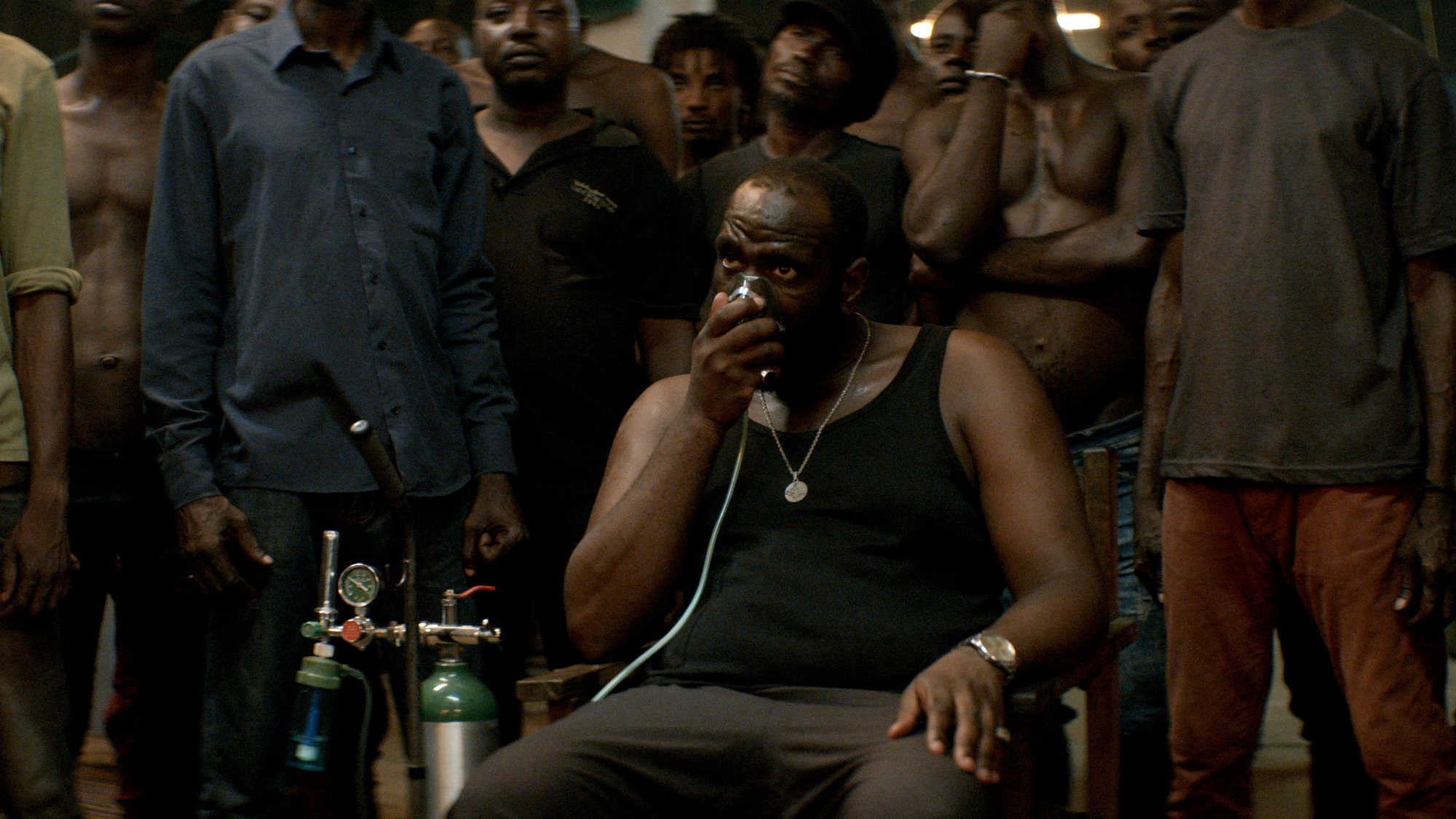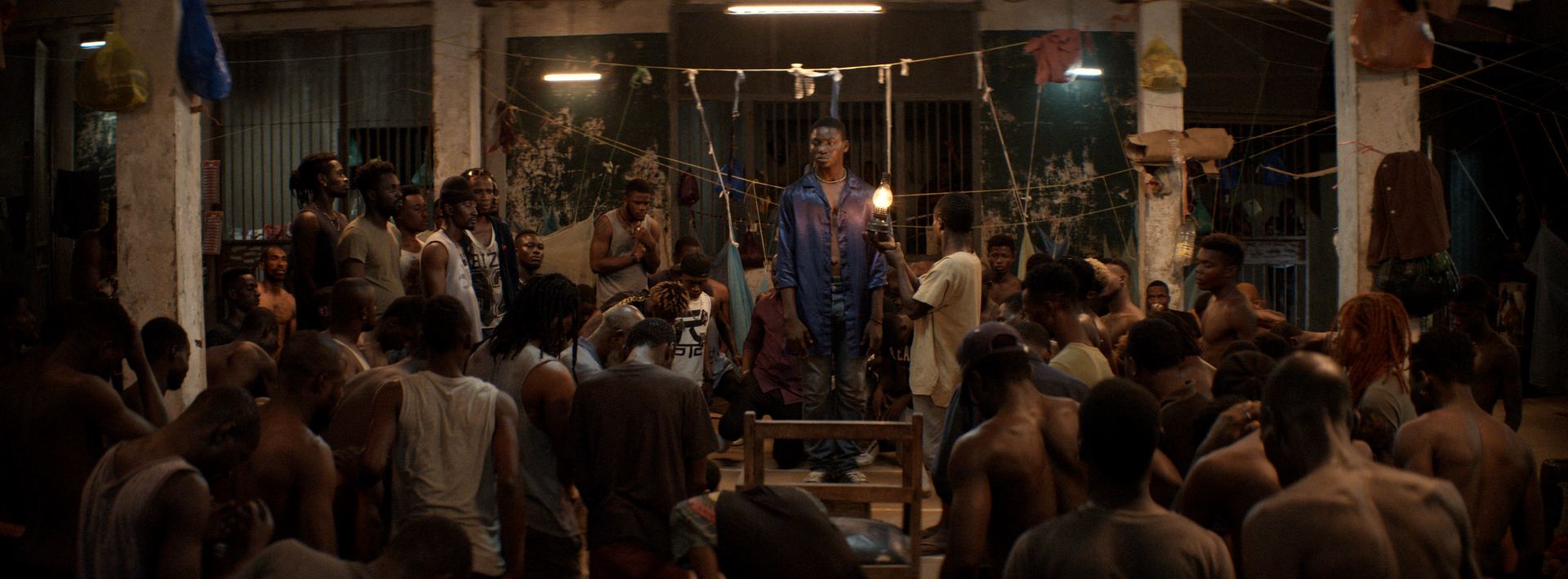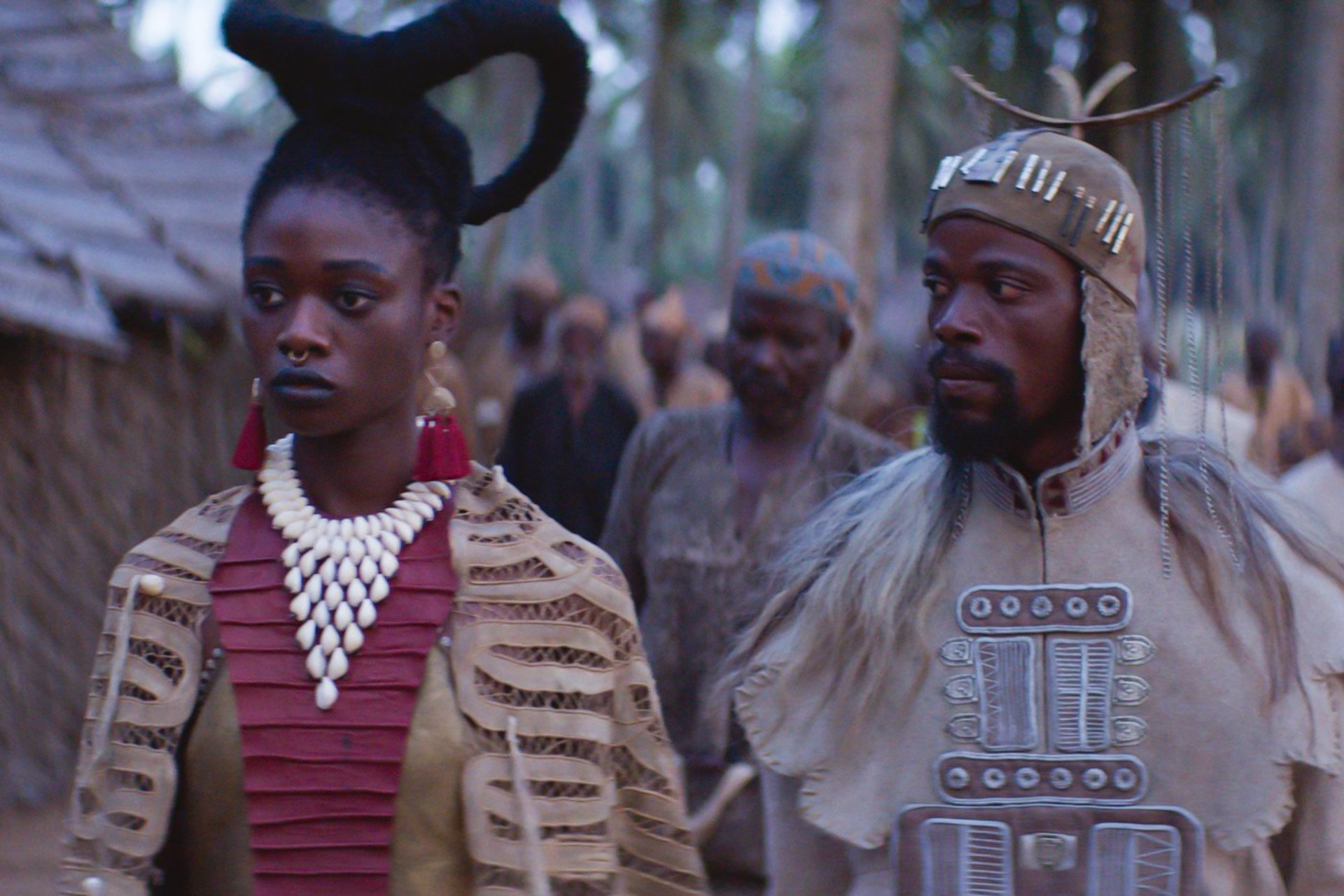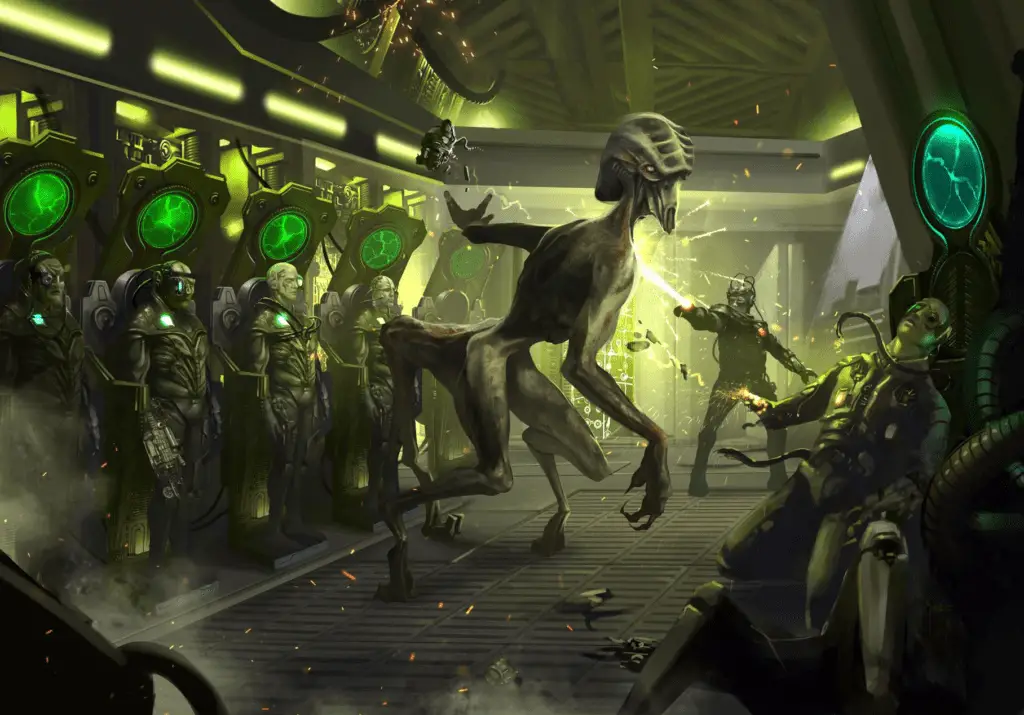timespace coordinates: Ivory Coast, Western Africa early 21st century
“Night of the Kings (French: La Nuit des rois) is a feature drama/fantasy film directed by Philippe Lacôte (a film director from Côte d’Ivoire). Announced in 2017 under the working title Zama King, the film premiered at the 77th Venice International Film Festival, with a follow-up screening at the 2020 Toronto International Film Festival where it won the Amplify Voices Award. The film was one of two films featured in the Spotlight section of the 2021 Sundance Film Festival. It won the Black Film Critics Circle Award for Best International Film, the African American Film Critics Association Award for Best Foreign Film and the NAACP Image Awards 2021 for Outstanding International Motion Picture.”(wiki)

I do not pretend I can go into the subtilities or cultural specificities of this movie, but I consider it one of the best movies I have seen lately. There has been a lot of talk about what is cinema and what is not cinema in the age of streaming services and “devaluing of content”, with famous Hollywood directors and then critics jumping in.
Night of the Kings shows how shallow is such talk is or how it is mainly framed or defined inside a very limited arena – ignoring both non-European/Euroamerican cinema or how it tends to ignore the arrival of the post-cinematic. It’s eminently easy to trash most of Western Hollywood blockbuster cinema – as repetitive drivel (which it is) or a heteronormative sequel-autophagia and shameless fanservicing. It’s perfectly OK to blame the sequel industry or the Netflix production money machine. Yet there’s is also something affirmative to new non-Euroamerican movies (or say fictions in general) – that goes beyond mere questions of taste or basic film critique – showing us the current blindspots and unspoken presuppositions and expectations of such a ‘constructed’ public.
Movies like The Night of the Kings point towards what lies outside of that limited horizon. We’re all restricted by our local comfort or supposedly global netizen status. We do this only by sticking with what is shoveled at us and ignoring all those movies out there. This is a direct example that we’re never done with ‘provincializing Europe’ (or the Global North) in Dipesh Chakrabarty‘s immortal phrase. The question is not about expecting the unexpected but attending to and allowing these other lives and other perspectives to breakthrough. The movie’s setting is inside the fictionalized MACA (infamous) prison a Royaume (realm) that is a world within a world, with to the central role of storytelling and narrative framing by the West African prisoner griot that embodies this rich oral storytelling tradition.
Global SF authors like Benjanun Sriduangkaew (Machine Mandate universe) and Tade Thompson (Wormwood cycle) writing in English – have been pointing out how annoying and puzzling it might feel to a diasporic non-Western writer to explain to a so-called ‘typical’ audience that their world-building is inspired by actual events or living cultures or that even SF editors might consider their worlds as inconceivable or improbable inventions. That is – these properly ‘SF’ aspects of their fictions, terminologies or traditions are not exactly fictions since they are closely inspired by a reality that appears completely ‘unreal’ (or automatically SF) to the average Western/Global North commercial public (also a construct of audience polls, micro-targeting & marketing ploys), or one that lies completely outside the experiential or multicultural knowledge bounds of a white Eurocentric/US audience. Explanations feel empty if the model public is centered only around a Western sensorium and reception that remains aloof and for the most part an isolated, posh, and prosperous cultural backwater juggling the same tired references and the same dusty canon on displays over and over again.
Even with Black or Asian actors starring in successful Hollywood movies – there is sadly rarely a radical change in the overall worldview of those Western-inflected perspectives represented.
I am not trying to essentialize non-Western differences – just trying to trace how difficult it is to make room for such movies as The Night of the Kings that have a 99% African crew or that actually play on the welcome absence of the usual metropoles of the cinematically overfamiliar Global North (Tokyo, Paris, New York, Berlin, London, Los Angeles etc.) that serve as a backdrop to imagining our contemporary 21st c world. They also refer to world events that nearly nobody remembers (such as the first Ivorian civil war 2002-2004 or the 2010 second Ivorian civil war) or that have this rapidly effacing “‘half-life’ of a disaster ” under disaster capitalism. We’re reminded that the contemporary world happens mostly elsewhere than the Eroatlantic! Also, there is (happily!) less need for the usual business center-skyline as a silver lining for superheroes jumping, saving or destroying the world. None of these typical Marvel Universe – highrise shots marking the Western pop imaginary.
We see the Lawless Quarter slum of Abidjan from the perspective of the locals combined with the usual drone perspective – a bird’s eye view perspective that we got used to from countless movies. At the same time recent history tells us a parallel history of the drone in Africa. African civilians have been more and more at risk from drone strikes since the US/CIA has stepped up its drone warfare capabilities. This movie does not touch upon such an ominous military presence in the life of civilians but nevertheless, it’s hard to decouple such existing technologies and realities influencing the lives of so many people.
There is a series of stories within stories – there is the larger frame of Blackbeard (Steve Tientcheu) as the fallen Dangôro, the sick king and the god of La MACA prison that anoints a new young and hapless inmate (Bakary Koné) as the new Roman – playing both sacrificial lamb and storyteller in what seems like a violent transition of power. The various factions and form an inmate group that starts to sing (like an antique choire), dance and accompany the story of Roman -. of his former boss and urban legend Zama King that was recently killed. He has to hold up their attention in order to survive the Red Moon Night. Zama King – is a historical figure, one of “the handyman for the new leaders of the country,” in the words of Roman, one like many other young men that become a temporary hero of the northern rebel leaders. Zama King was only one of those young men with political backing that felt emboldened to turn chance to their advantage.
The story of the impromptu griot – also includes a coastal African kingdom and what appears to be an episode completely different historical era, one that nevertheless is intertwined with current events. It is a history of love, deceit and sorcery. The life of the local legendary trickster Zama King of the Microbe gang member of slum dwellers intertwines and follows the same route or ordeals as those of other times and remote events. His childhood, subsequent adoption – are all open to invention & revision. Visually we are presented with so much detail that it hard to focus or take in all at once. There are also different kinds of temporality and intentionality going on exemplified in different versions of the same story. Different retellings of the same history differ. Place mutates and alters the linear time flow of the MACA. Its power is more ominous – than what seems initially as a self-contained prison world. Besides the inmate audience, there are also the guardians hiding – and surveilling and having a stake in the unwinding story.
Structural racism under capitalism always incarcerates black bodies – the US has one of the biggest inmate populations in the words. In very different place (but related in terms of both racism, colonalism & slave trade), MACA feels distant from outside events, yet within the walls of its carnivalesque experience there is an ominous invisible presence of former colonial masters – the French troops that have kept a hold on Abidjan. These are the strengths of such a movie, one that does not follow the usual Enlightenment tropes carried along by the Western linear timeline of ultimate progress and totalizing framework. There is not so much a blurring of fiction and reality – but a heightening of the survival value of fiction. The ceremonial role of West African griot storytelling does not stay purely ceremonial or static but is involved in all the making and remaking of power, its vaccilations, reconstructions, modulations and interruptions. Fiction takes on this important role of continuous reworking histories, of improvising (out of need or under pain of death), of a general way in which speculative fiction (contemporary or traditional) is supposed to convey a sense of intensified realism in extreme situations. Nothing is neutral – and the storyteller is never sure of himself or of his own spinning. Roman is revising on the go and continuing interrupted stories he can only abandon with his life forefeited. Ending a story means death in a literal sense. The death of the story, its proper ending is not only the end of the movie (like in 1001 Night Islamic Arab cycle of famous stories) but the uncertain continuation under uncertain times. The audience is emprisoned by the story, not just because one is desperate to hear the end, but because it is already taken hostage, it cannot abstract, it cannot run away but is forced to find a way, to intervene, to shape the story with the means available.
Death is never far – and never just about sequels – it may be a play yet is is a play that keeps death at bay, that invents unexpected twists so that the knot of life can keep tight. In a sense we are prisoners of our time and space, of our culture and mores, of our biases and we can never completely escape them. Nothing can be totalized into a single univocal whole, and what exists or gets perceived is shaped by what lies to these situated and per-force limited perspectives (also explored by the paradoxo-metaphysic account of indexicalism in the recent book by Hilan Bensusan). Reality is not primarily substantive but first defined by a here and a there according to the speculative realism of Hilan Bensusan. There is much to say about how a non-traditional Western African griot time travels and even how the film director is a kind of contemporary griot.
There is much to say about many things – including the easy way VFX combine with the overall beauty (and brutality) of the movie. How the battles are happening on many levels. Imaginary creatures, local heroines or invisible forces play an important part in The Night of the Kings, including the fact that it is always a plural as in Kings not A King (not Lord of the Rings). It is overall a magnificent movie. Please take my word on it and watch it asap!



















